The Throne of Tutankhamun stands as one of the most remarkable artifacts of ancient Egypt. This exquisite piece, uncovered from the young pharaoh’s tomb, showcases the unparalleled artistry, craftsmanship, and cultural richness of a civilization that continues to fascinate the modern world. Let’s explore the ancient remains with archeology dulichvn.net
A Throne the Throne of Tutankhamun
1. The Splendor of Tutankhamun’s Throne
Crafted from radiant gold and adorned with vibrant inlays of semi-precious stones, the throne is a visual testament to the opulence of ancient Egypt. The intricate carvings and detailed ornamentation highlight the exceptional skill of the artisans who created this masterpiece over 3,000 years ago.
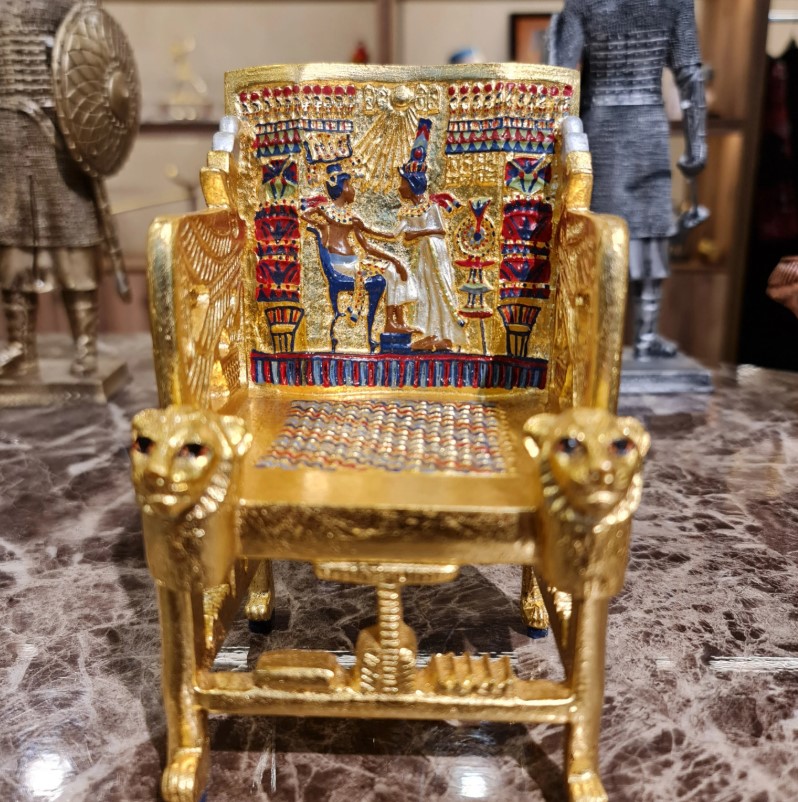
2. A Symbol of Divine Authority
The throne depicts an intimate and symbolic scene of Pharaoh Tutankhamun seated, with his queen Ankhesenamun anointing him. This imagery is not merely decorative but reinforces the divine authority of the pharaoh, emphasizing his role as a godlike figure chosen to rule.
3. The Lion Armrests: Guardians of Power
The throne’s armrests, shaped like lions, serve as powerful symbols of strength and protection. In Egyptian mythology, lions were associated with guardianship, making their inclusion a deliberate and meaningful artistic choice.
See more: Exploring the Gate of Angkor Thom: A Journey Through Time
The Artistic and Cultural Significance
1. Mastery of Ancient Craftsmanship
The throne is a marvel of ancient metallurgy and design. The gold reflects the wealth and resources of the Egyptian empire, while the precise detailing of the inlays and carvings demonstrates the artisans’ advanced techniques and aesthetic vision.
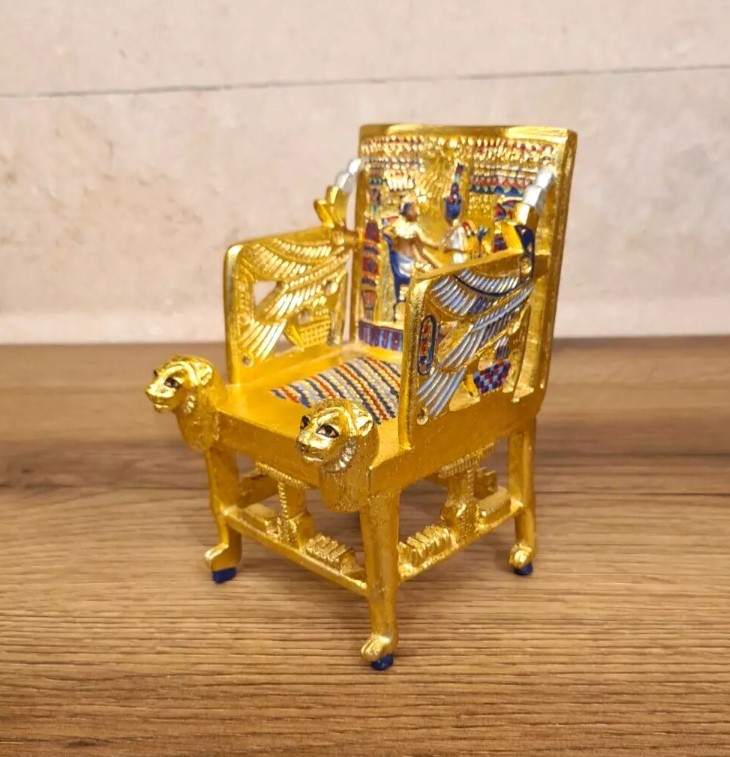
2. Hieroglyphs: Messages from the Past
The throne’s backrest features hieroglyphic inscriptions that provide insights into the pharaoh’s reign, his divine right to rule, and the cultural narratives of the time. These writings act as a bridge, connecting modern observers with the beliefs and values of ancient Egypt.
3. A Reflection of Egyptian Society
Beyond its artistic value, the throne reflects the hierarchical and spiritual fabric of Egyptian society. It symbolizes the wealth of the kingdom, the importance of royal unions, and the belief in the afterlife, central to Egyptian culture.
Preservation and Legacy
1. A Treasure of the Tomb
Discovered in 1922 by archaeologist Howard Carter in the tomb of Tutankhamun, the golden throne was part of a vast array of burial treasures. Its preservation over millennia speaks to the meticulous care with which the ancient Egyptians prepared their tombs.
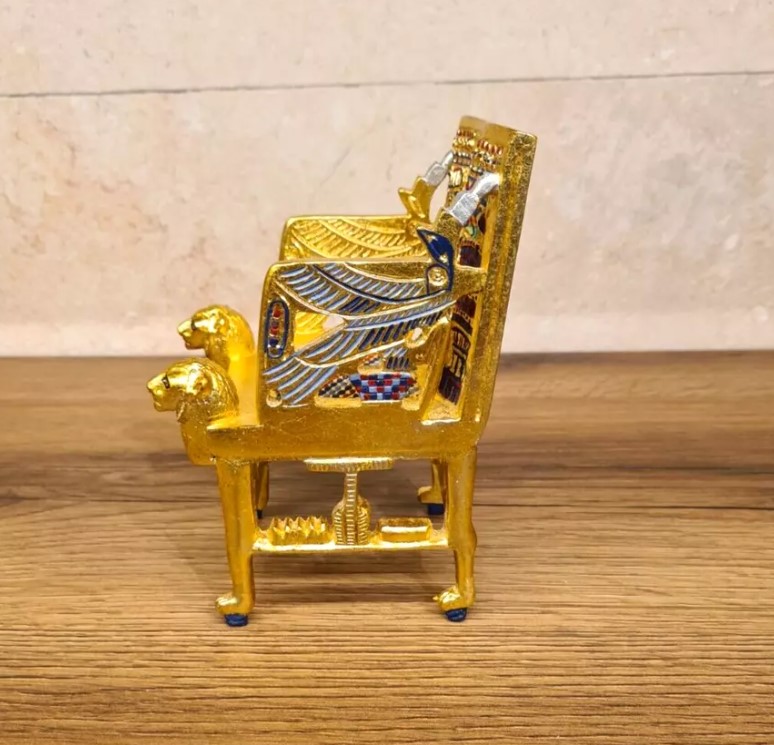
2. Insights into the Afterlife
The throne’s presence in the tomb underscores the Egyptian belief in a well-equipped afterlife. Tutankhamun’s burial chamber was a microcosm of earthly life, filled with objects to ensure the pharaoh’s comfort and power in the next world.
3. A Source of Modern Fascination
Today, the golden throne captivates historians, archaeologists, and visitors alike. It is a centerpiece in exhibitions on Ancient Egypt, offering a tangible connection to the grandeur of one of history’s most intriguing civilizations.
See more: The Dolmen de Bagneux: A Monument of Neolithic Ingenuity
The Eternal Allure of Tutankhamun’s Throne
1. A Testament to Human Creativity
The golden throne of Tutankhamun is more than a relic; it is a celebration of human creativity and ingenuity. Its beauty and craftsmanship remain unmatched, serving as an enduring source of inspiration.
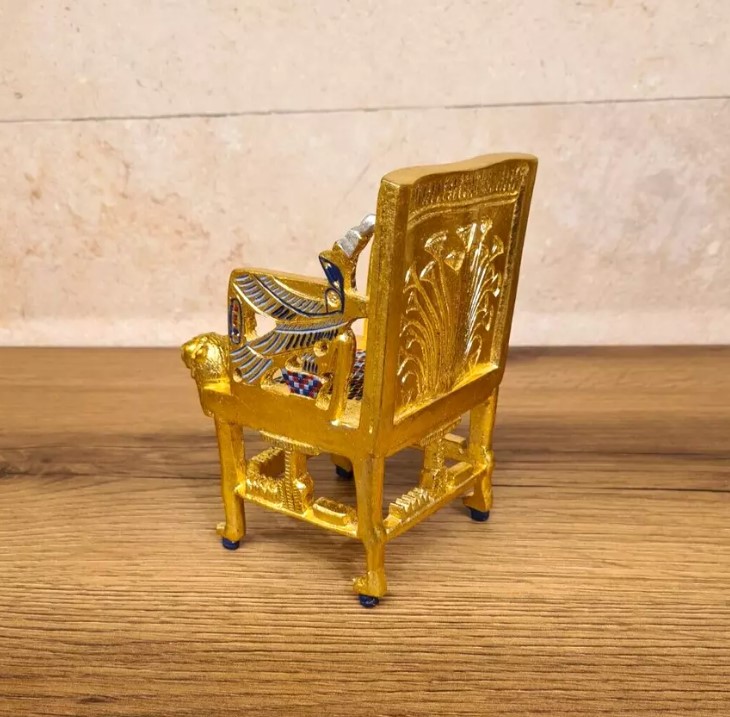
2. A Window into Ancient Life
Through its design and symbolism, the throne provides invaluable insights into the lives, beliefs, and artistry of Ancient Egyptians. It allows us to imagine the world of Tutankhamun and the splendor of his court.
3. A Legacy That Lives On
The golden throne has transcended time, becoming a symbol of Ancient Egypt’s enduring legacy. It reminds us of the sophistication and cultural richness of a civilization that shaped the course of history.
Conclusion: A Throne Beyond Time
The Throne of Tutankhamun golden throne is not merely a piece of furniture; it is a masterpiece of artistry, a symbol of divine rule, and a testament to the ingenuity of Ancient Egypt. Every detail, from the lion-shaped armrests to the vivid inlays and hieroglyphs, speaks of a civilization that excelled in art, culture, and spirituality.
As it continues to inspire awe and admiration, this throne remains a timeless reminder of the grandeur of Ancient Egypt—a legacy that continues to shine bright across the centuries.

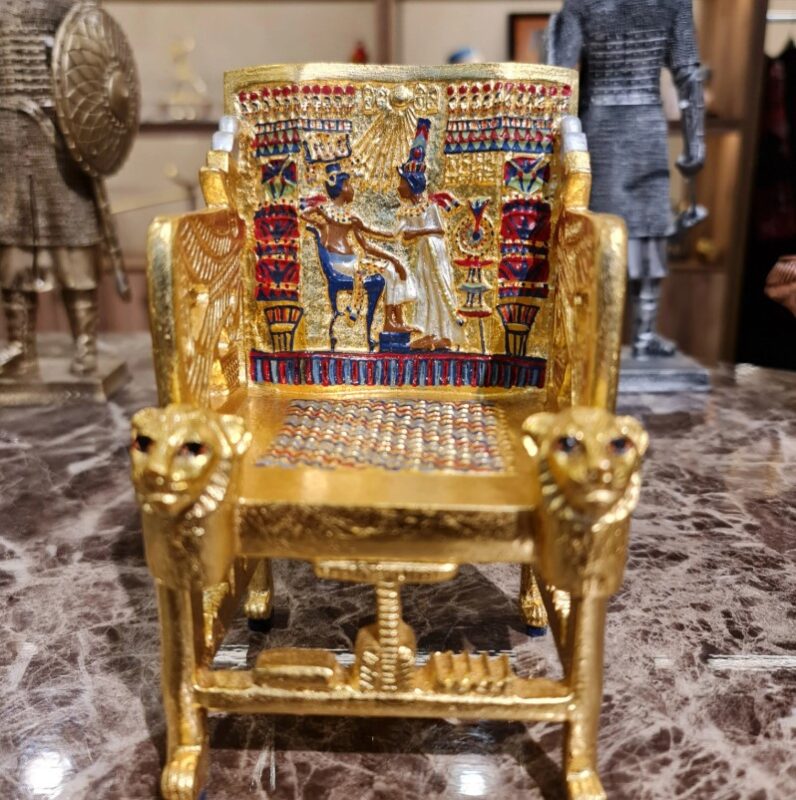
CÁC TIN KHÁC
Mary Walton: The Forgotten Inventor Who Helped Clean Up America’s Cities
Tomb of Queen Nefertari in the Valley of the Queens, Egypt
Discover the Hypostyle Hall of the Temple of Hathor at Dendera
Venus de Losange: Unveiling the Mystery of a 20,000-Year-Old Paleolithic Icon